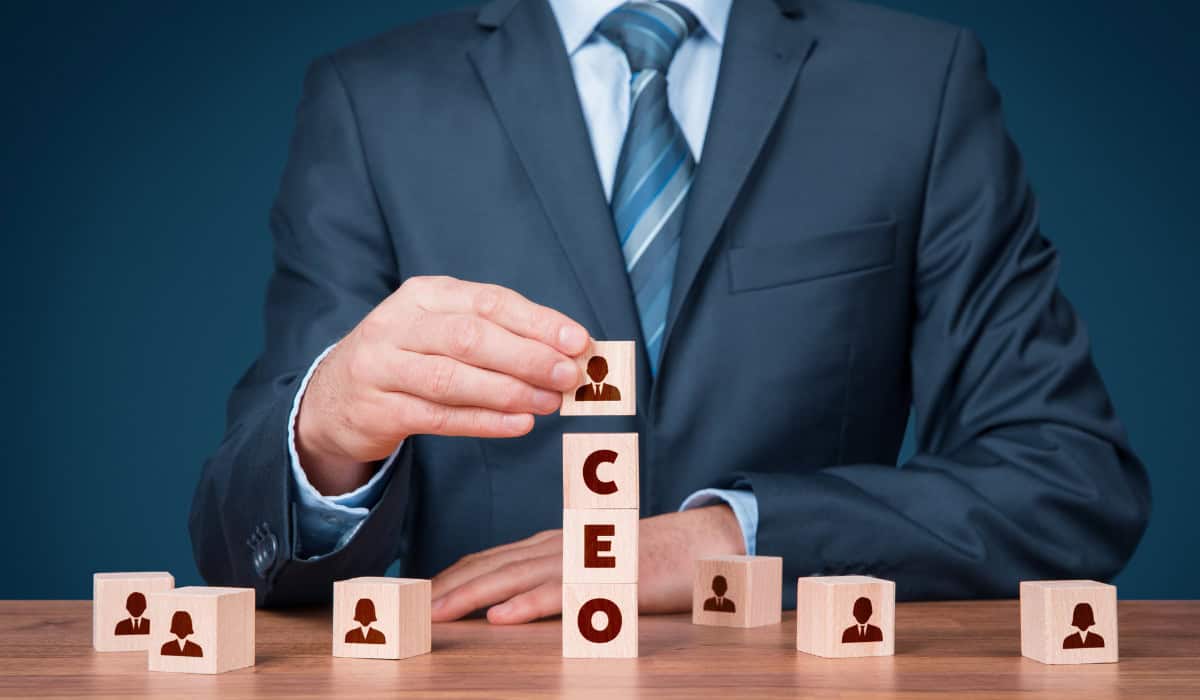
©Jirsak via Canva.com
January 30, 2025
What’s the Key to a Smooth Retail CEO Transition?
On a recent HBR on Leadership podcast, Jason Buechel, CEO of Whole Foods, discussed how important it was for him to address employees’ concerns as he underwent a transition period to replace legendary co-founder John Mackey in 2022.
Mackey had led the organic chain for more than 40 years.
In tackling a CEO transition, his foremost advice was to “understand the voice of the team members.”
Buechel, who on Monday was given the additional title of VP of Amazon Worldwide Grocery Stores, spent his 11-month transition period partaking in a “Whole Conversations Tour,” speaking to associates and other Whole Foods’ partners to find out what was most important to them.
“In some cases, they had fears with John’s retirement of, are there going to be major changes to our culture or our quality standards? What are things going to look like going forward?” Buechel noted. “And so did our stakeholders, whether it was suppliers or customers, community partners. I think it’s important to understand the voice of all of those stakeholders as you’re making the transition.”
His secondary advice for those transitioning to CEO was to lean into their strengths as a leader. He said, “For me, John and I, we lead in very different ways. And that’s why we’re so complementary in working together. So I think it’s also about being authentic to yourself and at the same time, making sure that you’re supporting the company and where it needs to go.”
The retail industry has seen a number of CEO turnovers over the last year, including at Macy’s, Nike, Petco, Victoria’s Secret, REI, Ulta Beauty, Kohl’s, Ross Stores, Havertys, Signet Jewelers, and Dollar Tree.
In a blog entry, McKinsey called out four keys to success in CEO transitions:
- Not making it about you: McKinsey wrote, “All this attention and power can quickly create a celebrity CEO phenomenon where the transition becomes all about you. Successful CEOs don’t let this happen — they keep their minds focused on the institution.”
- Listening, then acting: According to McKinsey, “With people overanalyzing every word and move the new CEO says and makes, the urge to decide, declare, promise, and explain is strong. The best leaders in transition know that it is better to listen and find out what is really going on before making broad declarations or premature moves.”
- Nailing your firsts: McKinsey shared, “Getting your first impressions right will send strong messages about how you intend to lead differently (from the previous CEO, as well as versus how you have led in previous roles) and the renewal opportunity you see for the organization.”
- Playing “big ball”: Sandy Cutler, former CEO of the power management company Eaton, told McKinsey, “Play big ball, not small ball. By that I mean spending time on things that no one else can in ways that magnify your effectiveness without getting mired in things that don’t make a difference.”
Spencer Stuart advises setting a goal to establish a workable executive team within 12 months to avoid a “sophomore slump.” The executive research firm wrote in a blog entry, “Some CEOs never fully recover from a slow start to their tenure. The question new CEOs must resolve immediately is how prepared they are to be decisive on the critical people moves that will define their leadership team and, quite potentially, their success.”
Discussion Questions
What advice would you have for a new CEO transitioning into the role?
Does an incoming retail CEO face any unique challenges versus other industries?
What are some common pitfalls that lead to a slow or failed CEO transition?
Poll
BrainTrust
Brian Numainville
Principal, The Feedback Group
Gary Sankary
Retail Industry Strategy, Esri
David Biernbaum
Founder & President, David Biernbaum & Associates LLC
Recent Discussions







The real key is for the old CEO to leave the business in a good state and with a clear sense of direction. Unfortunately, this isn’t always the case, which means a new CEO has a lot of loose ends to tie up. Aside from this, having a good period in which to enact a proper handover is important. As is an established team of executives who can support the new CEO as they transition into the role. Once in place, the first action of any new CEO is to listen and learn to people across the organization – in the case of retail that means getting out into stores and warehouses as well as other functions.
The key ? Rigging the election!! (Just kidding…..uhmm….) The transition is smoothest when the change is smallest, which means, ultimately, minimizing the influence of personalties: the goal of each CEO, from the second s/he assumes the chair, should be to perpetuate – and add to, if necessary – the template the predecessor(s) have established. The perfect company is one in which governance can be performed by any competent person.
There is a greater likelihood of a smooth retail CEO transition if all the above recommendations are followed; however, I would like to emphasize a few others in the broadest sense.
Experience: Without a solid retail bio, the learning curve would be too complex for a smooth transition. It is imperative that the CEO has a thorough understanding of retail operations.
Most egotistical individuals prefer to enter a building and say, “I do not care about the past.” This is a grave error. Spend as much time as you can with individuals who are in the know, both inside and outside of the organization, so that you can determine what needs to be improved, what needs to be eliminated, and what needs to be modified. Don’t forget to explore with vendors and suppliers on all levels.
Effective communication is essential during a CEO transition to ensure that all stakeholders are aligned with the new vision and strategy. Clear and open lines of communication help to build trust and facilitate collaboration among team members, vendors, and suppliers. By keeping everyone informed and engaged, the transition process becomes smoother and more efficient, minimizing disruptions to the business.
It is important to keep in mind that retail is a people business, a social business. It is important to be transparent from the moment you enter the building. Keep your intentions and yourself out of the shadows.
Ensure that you and your board members are on the same page. If you are not, the entire organization will spin out of control. Perhaps that is the reason you are here in the first place. You should also manage your shareholders in a more general manner.
I especially like the point about listening and then acting. I’ve found the most successful transitions involved plenty of listening and understanding before jumping in to make changes. And, success also comes from listening on an ongoing basis to feedback and input from a wide range of constituents.
Control what you can control – applies in every situation I know of, even CEO transitions. In Mr. Buechel’s case, he seems to understand this, and it’s the thread through all of his points. Employees want leadership that is strategic and can share a vision for the company. If you listen, play big ball, and make the transition not about you, you’re halfway there.
1) Meet with every team to properly diagnose where the issues lay – if the stores are a mess, is that an operational issue or merchandising issue?
2) Have a clear understanding from your Finance + Treasury teams about how much you can invest to fix the business
3) Set reasonable timelines for your business leaders (no one can fix a large business in 30 days), and hold them accountable for results. Ideally, change should be noticeable within 60 days, with best practices firmly entrenched by 120 days. If there isn’t a noticeable sales lift after this, then admit your misstep and go back to the drawing board